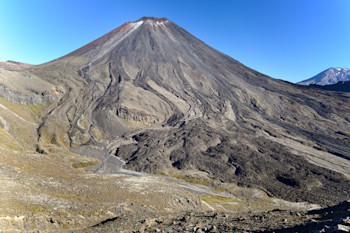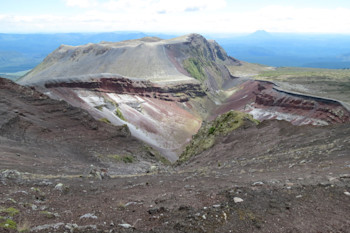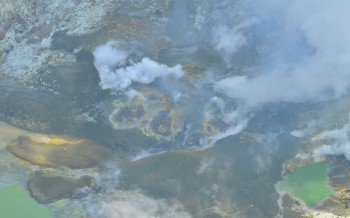
Magma, lava, and extrusions. What are they?
You might be wondering what the difference is between magma and lava, or even what extrusions are? Volcanologist Brad Scott is here to help you with the different terms.
So, let’s start off at depth under the volcano and work our way to the surface. Eruptions from active volcanoes are driven by the molten material that forms underneath them. This very hot, molten and fluid material is known as magma.
If large volumes of magma are stored at depth, volcanologists refer to this as a magma chamber. These will typically be found at 1-8 km depth beneath the volcano and vary in size from a few tens of cubic metres to cubic kilometres. The temperatures can be in the range of 700-1,300 degrees Celsius! A volcanic eruption is driven by this molten material moving up through the volcano to a vent on the surface.
Once the magma reaches the earth’s surface and has been thrown out of the volcano explosively, as ash and rocks, or has flowed from a vent it is known as lava. It is essentially the same as it was under the ground, just the terminology we use to describe it has changed.
The most familiar way for magma to escape, or extrude, at the earth’s surface is as lava flows or domes. Gas-driven, explosive lava eruptions can also form ‘fire fountains’ of liquid rock. However, the most common form is thick, slow-fast moving rivers of molten material - lava flows. This style of eruption is usually called effusive. Lava varies in viscosity (runniness and therefore speed of movement), chemistry and temperature.
If the viscosity of the lava at the vent is ‘viscous or sticky’ then it will not flow, and a steep sided pile of hot rock will form. These piles of hot rock are usually called lava domes and can have lobes on the sides where it has tried to flow. The surface is often rough and blocky because of fragmentation of the cooler outer crust during growth of the dome.
Volcanologists talk about the extrusion of a lava dome to the surface. This is what happened at Whakaari/White Island following the 9 December 2019 eruption.
Attributable to: Brad Scott, Volcanologist Media contact: 021 574 541 or media@gns.cri.nz





